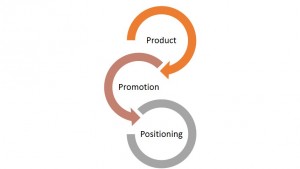Probably the earliest exposure that almost all of us had to marketing, was in the form of the advertisement jingles that we rarely missed on TV. The number of television channels were limited and almost all that were there, used to show the same ads throughout the day. Thus, the visibility of each ad was much more as there were not quite competing with another for air time. Also, for some reason the number of companies/brands who used to advertise their products on TV, were only a handful and hence, there was less crowding the viewer. Today, the times have changed and so has the element of competition in the advertising industry. But one thing that has remained constant throughout is the end-objective of creating an impact on the audience. It is this impact that I seek to analyse in this article.
Owing to the paucity of space, I have chosen to limit myself only to advertisements that have been aired on national television. Having got that out of the way, let me jump into my analysis. If we go back to the very basics of marketing, it would be quite correct to say that any advertisement is primarily focused on three important pillars or, to make it sound more ‘jargonised’, on 3 Ps, which are as follows:-
- Product – it shows what the product is and how is utility derived from it
- Promotion – the advertisement itself is a means of promoting the product
- Positioning– it aims to create a certain image of the product/brand in the minds of the customer, which, it thinks, would help her in better identify with the product/brand, and hence, effect a sale.
Of the three, the most crucial one is ‘Positioning’. Product and Promotion are generally handled well by almost every ad. But it is this ‘Positioning’ which helps an ad really clinch the deal. I shall now try and interpret this aspect of the two following brands, as depicted in their respective advertisements:-
- Cadbury – A chocolate is a commodity and hence, it has to be advertised via an emotion. This is exactly what Cadbury has been doing so well ever since its inception. The emotion that it has remained adhered to is that of Happiness and the channel of showing that happiness has always been through Celebration. Be it the yesteryear ad showing a young woman dancing her way into the cricket field when her boyfriend hits a century, or a pretty Aditi Rao Hydari asking her stoical husband (played by the versatile Rajkumar Rao) on their marriage anniversary to wave a scarf which makes the empty Ferris Wheel that they are sitting on, to start going round – the message communicated is very simple. Cadbury is a brand that encourages you to celebrate the little joys of life, no matter where you are, who you are with, and what the time is – and that the celebration would be better if you had a Cadbury chocolate with you. An important pointer here would be that many people debate that Cadbury’s positioning is very similar to that of Coke which also harps on ‘Happiness’. But I believe that the difference in product categories, coupled with the brilliant story-telling abilities that both the companies have, is what has helped them occupy distinct places in the consumer’s mind.
- Tata Nano –Albeit a car, this has been a pioneer in its own right in the automobile industry. The most wonderful thing about it has been the fact that Mr Ratan Tata had first promised that his company would come out with an INR 100,000 car and then did the engineers actually build the car. Hence, it was a dream-come-true project in ways more than one. But the positioning of the Tata Nano has distinctly changed through its TV advertisements. The first ad that had come out positioned the car as an aspirational buy for people living in small towns and tier-3 and below cities. It showed a middle-aged man driving home a Nano to a locality where probably nobody owns a car, and then the car is traditionally welcomed as a family member and almost all the children in the entire locality get into it for a ride. The ad focused on the robustness and ruggedness of the car’s design.The next ad positioned the Nano as a car for the urban youth. It showed a group of four friends driving the car to a distant place all in search of a cup of tea. It focused on the newly added features, most of which were interior-based. This shift in positioning indicates that the company probably wants to target a different segment now.
The two examples that I just talked about are contrasting in nature – the former is an illustration of static positioning, while the latter is a case of dynamic positioning.It would be futile to choose one over the other because it is all contingent upon the overall growth strategy of the parent company. There are a host of other ads which can be similarly dissected, but that can be our topic of discussion for some other day. Before signing off, I just want to point out that ‘Ad Analysis’ is a favourite topic for many interviewers who are looking for candidates in the Sales and Marketing domain.

